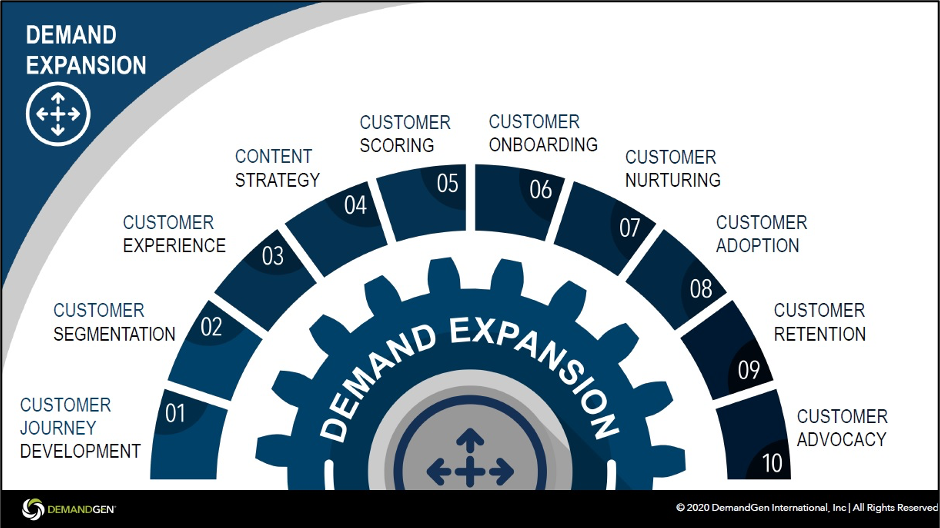
All your hard work paid off. That new lead you nurtured from Prospect to Closed – Won is now a new client. You invested a significant amount of time and money up front. Now that you’ve closed the account, congratulate yourself on the win, hand it over to Customer Service, and never look back. Right?
Um, no. If that’s what you’ve been doing, you’re setting up your new clients for inevitable disappointment — which means you’re already leaving money on the table. Dissatisfied clients don’t continue to invest in a one-sided partnership. Even worse than that, they typically end up as former clients and will no longer serve as a valuable reference for future opportunities.
This will be your clients’ first Customer Service experience with your organization and the project team they’ll be working with moving forward. I’ve said it before, and I’ll say it again: It’s about the experience. How you handle the early weeks of this transition can really set the tone for your relationship. Providing a personal touch can go a long way in making sure your new clients feel special (which they are!) and reassuring them they made the right decision by partnering with your business.
It’s extremely important that you onboard and engage with your clients as an organization. Your clients see Susan in Sales and Mike in Customer Service as part of the same team. And that team is your company. So, it’s also critical that you present a united front and make sure everything is aligned, from the moment your client signs a Statement of Work (SOW) to their transition from Sales to Service and throughout their journey with your organization.
Whether you already have an established process, or you’re just beginning to put an onboarding program in place, hopefully you’ll discover a few new tricks for creating a seamless customer onboarding experience that sets you apart from the competition:
- Welcome them with a personal email from your CEO: Who better than the owner of your company to convey passion and inspire confidence in the client’s recent investment in your product or service? Yes, the client said yes to your proposal; that doesn’t mean they won’t have any jitters about what lies ahead. Send a communication welcoming your client and reassure them they made the right decision.
- Present a visual reminder of your partnership: You both invested significant time and money before signing a contract. Your clients aren’t going to hang a copy of your contract on the wall and look at it fondly as a reminder of their smart decision-making. Consider sending a small welcome gift that reminds them of your relationship, such a plant, coffee mug, some fun building blocks to engage their creativity, or something that the entire team can enjoy.
- Be proactive in your communications: Don’t simply wait for your client to reach out to tell you what they think they need. Get ahead of what their needs are so you can answer those questions before they even ask. Make recommendations for what should come next, which ultimately helps extend the customer lifecycle and increase upsell and cross-sell opportunities, which support forecast expectations. Wow them with your expertise. Afterall, it’s why they’re working with you to begin with.
- Schedule regular Sales check-ins: All too often, once the client signs on the dotted line, the sales team vanishes into thin air. That creates a choppy customer experience, and often leads to miscommunication between Sales, the client, and Customer Service. Have Sales sit in on a client call or two in the very beginning to help ensure a smooth transition. Then, have them check in with the client periodically to make sure they’re satisfied. This has the added benefit of fostering a relationship of mutual trust between Sales and Customer Service.
- Know what success looks like to the client: Define success metrics up front based on how the client defines success, and make sure that all members of your internal teams are aligned with what success looks like to the client. Then, have regular check-ins to make sure you’re meeting those expectations. If you only focus on your own internal team metrics, but you don’t meet all of your client’s, it won’t bode well for customer lifetime value.
- Conduct high-level strategy check-ins: These are usually led by the account manager and consultant. Really invest the time early on to get to know your client. Establish what the regular cadence of communication will be and put together a loose agenda based on what you need to know to help your client meet their business objectives. Make sure you set — and reset — expectations as you go.
- Solicit customer feedback: It may sound simple, but all too often this is a wasted opportunity. You may think you’re doing a bang-up job, but how does your client think you’re doing? Here at DemandGen, we send out client surveys three times per year. It’s also important to maintain a regular one-on-one cadence with your clients to keep an open dialogue and ask for feedback. Ask them about their expectations so you can understand if there is more you can do to keep the relationship healthy.
- Don’t forget the close-out process: You’ve hit all your project milestones and provided flawless service delivery. Sending a small token of appreciation helps reinforce the important work you just completed together and that you make a great team. It’s also a nice way to show your appreciation, and can serve as a visual reminder of the success you had together (and hope to continue to have together in the future).
Plan for the journey — and take it together
No matter your industry, and no matter what product or service your offer, your clients come to you for your expertise to help them be successful in their careers. Setting that tone at the very beginning is critical to achieving that success.
Having a really solid onboarding plan — I like to think of it as a customer lifecycle plan — is half the battle. There can always be course correction, as needed. In fact, you should always evaluate as you go to ensure you’re meeting your clients’ expectations and achieving the expected results.
When it comes to improving customer loyalty and increasing customer lifetime value, Customer Onboarding is one component of a comprehensive Demand Expansion program:

Demand Expansion is the third D in the D3 Methodology, which DemandGen CEO David Lewis introduced in his recent blog post. You can also learn more about it in this DemandGen Radio podcast, The D3 Methodology: A Holistic Model for Maximizing Revenue.
Instead of only focusing on Demand Creation and Demand Management (the first two Ds), it’s time for marketers to really turn their attention to their organization’s Demand Expansion efforts and installed customer base.
Ready to improve your client onboarding program, and expand demand for your products and services across your client base? Send us a quick note and we’ll be in touch!
 Christina Yozallinas, Director of Services Operations, helps ensure our team’s operational effectiveness and utilization by establishing operating procedures, streamlining processes, monitoring performance dashboards, and managing our internal systems used for collaboration and learning. She defines and implements our onboarding procedures for new team members and helps ensure smooth facilitation of resource management by aligning client needs with internal resources.
Christina Yozallinas, Director of Services Operations, helps ensure our team’s operational effectiveness and utilization by establishing operating procedures, streamlining processes, monitoring performance dashboards, and managing our internal systems used for collaboration and learning. She defines and implements our onboarding procedures for new team members and helps ensure smooth facilitation of resource management by aligning client needs with internal resources.
The post You Had Them at Hello: 8 Tips to Take Your Onboarding Program to the Next Level appeared first on DemandGen.























